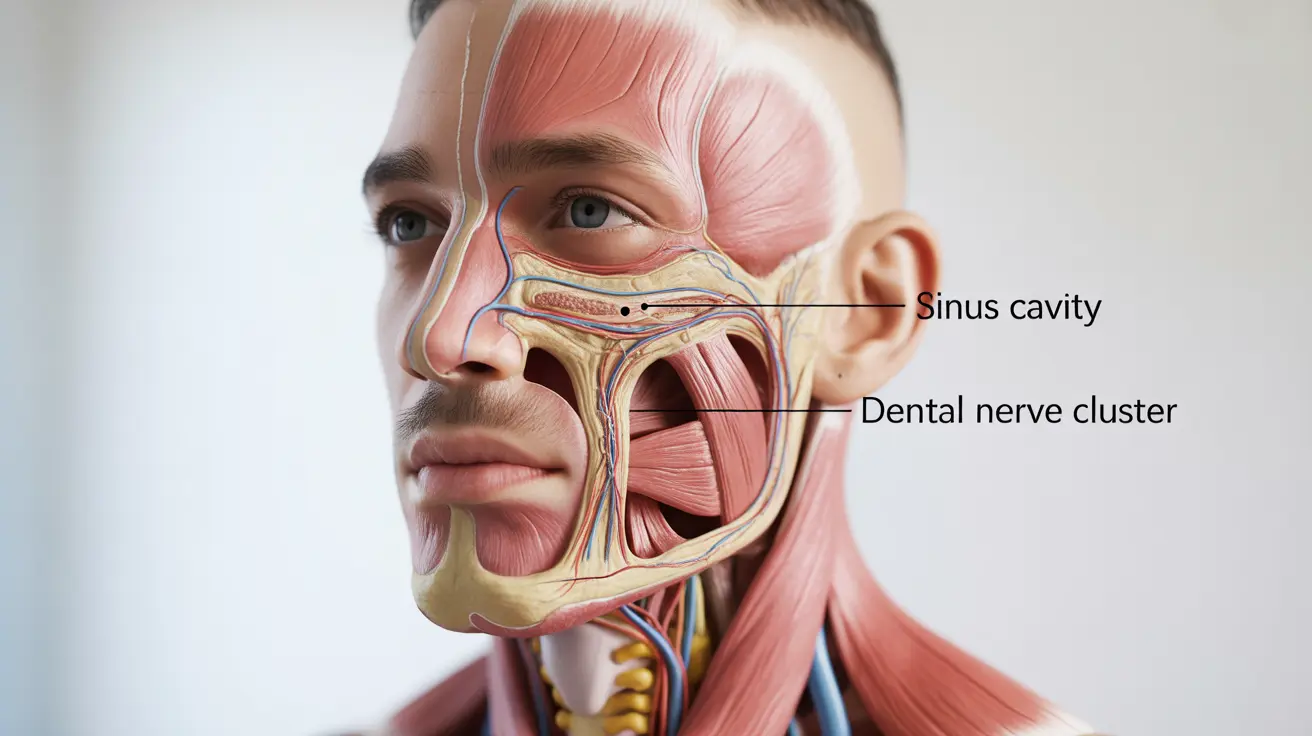Experiencing cheekbone pain under the eye can be both concerning and uncomfortable. This type of facial pain can stem from various underlying causes, ranging from sinus infections to nerve conditions, making it essential to understand its origins for proper treatment. Whether the pain is sharp, dull, or throbbing, identifying the root cause is crucial for finding effective relief.
In this comprehensive guide, we'll explore the various causes of cheekbone pain under the eye, discuss diagnostic approaches, and outline treatment options to help you better understand and manage this condition.
Common Causes of Cheekbone Pain Under the Eye
Several conditions can trigger pain in the cheekbone area beneath the eye:
Sinus-Related Pain
Sinusitis is a common cause of cheekbone pain, occurring when the sinuses become inflamed due to infection or allergies. The maxillary sinuses, located behind the cheekbones, can create pressure and pain when blocked or infected.
Dental Problems
Upper tooth infections or abscess can radiate pain to the cheekbone area. The close proximity of dental roots to the maxillary sinuses means that dental issues can sometimes mimic sinus-related pain.
Nerve Conditions
Trigeminal neuralgia and other nerve-related conditions can cause intense, shooting pain in the facial area, including the cheekbone region under the eye.
Diagnostic Process and Symptoms
Healthcare providers typically diagnose cheekbone pain through:
- Physical examination of the face and sinuses
- Dental evaluation when tooth involvement is suspected
- Imaging studies (CT scans or X-rays) when necessary
- Neurological assessment for suspected nerve conditions
Key Symptoms to Watch For
Common symptoms accompanying cheekbone pain include:
- Tenderness to touch
- Swelling around the affected area
- Nasal congestion or discharge
- Facial pressure that worsens when bending forward
- Temperature sensitivity in the face
Treatment Approaches
Conservative Management
Initial treatment often includes:
- Over-the-counter pain relievers
- Warm compresses
- Nasal decongestants for sinus-related pain
- Salt water rinses for sinus issues
Medical Interventions
More severe cases may require:
- Prescription antibiotics for bacterial infections
- Anti-inflammatory medications
- Specialized treatments for nerve conditions
- Dental procedures if the cause is tooth-related
Prevention Strategies
To reduce the risk of developing cheekbone pain under the eye:
- Practice good dental hygiene
- Manage allergies effectively
- Stay hydrated
- Use a humidifier in dry environments
- Avoid extreme temperature changes
Frequently Asked Questions
What are the symptoms of cheekbone pain under the eye, and how is it diagnosed?
Symptoms include facial tenderness, pressure, swelling, and possibly nasal congestion. Diagnosis involves physical examination, medical history review, and possibly imaging studies like CT scans or X-rays to determine the underlying cause.
How do you treat cheekbone pain caused by sinusitis versus dental issues?
Sinusitis-related pain typically responds to decongestants, nasal sprays, and antibiotics if bacterial. Dental-related pain requires specific dental treatment, such as root canal therapy or antibiotics for infection.
Can trigeminal neuralgia cause severe pain in the cheek and under the eye?
Yes, trigeminal neuralgia can cause intense, shooting pain in the cheek and under-eye area. This condition typically produces sharp, electric shock-like sensations triggered by routine facial movements.
What are the differences between migraines and sinus headaches in terms of symptoms and treatment?
Migraines often include light sensitivity and nausea, while sinus headaches typically involve facial pressure and nasal symptoms. Migraine treatment focuses on pain relief and prevention, while sinus headaches require addressing the underlying sinus condition.
How can I prevent or reduce the recurrence of cheekbone pain under the eye?
Prevention strategies include maintaining good sinus health, practicing proper dental hygiene, managing allergies effectively, staying hydrated, and avoiding known triggers. Regular check-ups with healthcare providers can help identify and address potential issues early.




